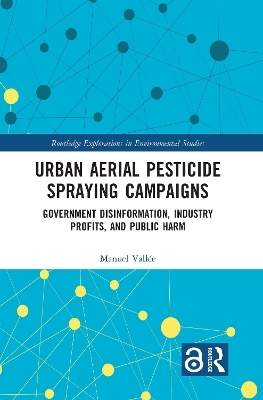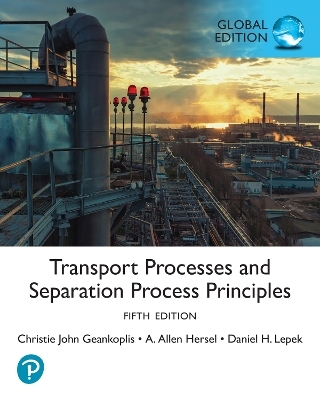
Urban Aerial Pesticide Spraying Campaigns
Government Disinformation, Industry Profits, and Public Harm
Seiten
2024
Routledge (Verlag)
978-1-032-37570-0 (ISBN)
Routledge (Verlag)
978-1-032-37570-0 (ISBN)
This book focuses on the role governments play in urban aerial pesticide spraying operations. Of great interest to students and researchers of pesticides, environmental sociology, environmental history, environmental studies, political ecology, geography, medical sociology, and science and technology studies.
This book examines social processes that have contributed to growing pesticide use, with a particular focus on the role governments play in urban aerial pesticide spraying operations.
Beyond being applied to sparsely populated farmland, pesticides have been increasingly used in densely populated urban environments, and when faced with invasive species, governments have resorted to large-scale aerial pesticide spraying operations in urban areas. This book focuses on New Zealand's 2002–2004 pesticide campaign to eradicate the Painted Apple Moth, which is the largest operation of its kind in world history, whether we consider its duration (29 months), its scope (at its peak the spraying zone was 10,632 hectares/26,272 acres), the number of sprayings that were administered (the pesticide was administered on 60 different days), or the number of people exposed to the spraying (190,000+). This book provides an in-depth understanding of the social processes that contributed to the incursion, why the government sought to eradicate the moth through aerial pesticide spraying, the ideological strategies they used to build and maintain public support, and why those strategies were effective.
Urban Aerial Pesticide Spraying Campaigns will be of great interest to students and researchers of pesticides, environmental sociology, environmental history, environmental studies, political ecology, geography, medical sociology, and science and technology studies.
The Open Access version of this book, available at http://www.taylorfrancis.com, has been made available under a Creative Commons Attribution-Non Commercial-No Derivatives (CC-BY-NC-ND) 4.0 license.
This book examines social processes that have contributed to growing pesticide use, with a particular focus on the role governments play in urban aerial pesticide spraying operations.
Beyond being applied to sparsely populated farmland, pesticides have been increasingly used in densely populated urban environments, and when faced with invasive species, governments have resorted to large-scale aerial pesticide spraying operations in urban areas. This book focuses on New Zealand's 2002–2004 pesticide campaign to eradicate the Painted Apple Moth, which is the largest operation of its kind in world history, whether we consider its duration (29 months), its scope (at its peak the spraying zone was 10,632 hectares/26,272 acres), the number of sprayings that were administered (the pesticide was administered on 60 different days), or the number of people exposed to the spraying (190,000+). This book provides an in-depth understanding of the social processes that contributed to the incursion, why the government sought to eradicate the moth through aerial pesticide spraying, the ideological strategies they used to build and maintain public support, and why those strategies were effective.
Urban Aerial Pesticide Spraying Campaigns will be of great interest to students and researchers of pesticides, environmental sociology, environmental history, environmental studies, political ecology, geography, medical sociology, and science and technology studies.
The Open Access version of this book, available at http://www.taylorfrancis.com, has been made available under a Creative Commons Attribution-Non Commercial-No Derivatives (CC-BY-NC-ND) 4.0 license.
Manuel Vallée is a Senior Lecturer of Sociology in the School of Social Sciences at The University of Auckland, New Zealand.
1. New Zealand's Painted Apple Moth Eradication Operation 2. The Social Production of a Foreign Species Incursion 3. Contextualizing the Eradication Response 4. Contextualizing the Aerial Pesticide Spraying Response 5. Community Responses to the Spraying Operation 6. Framing Foreign Species as Biosecurity Threats 7. Government Actions that Allay Pesticide Concerns 8. Managing Uncomfortable Knowledge 9. The Mediating Role of Cultural Context
| Erscheinungsdatum | 20.02.2023 |
|---|---|
| Reihe/Serie | Routledge Explorations in Environmental Studies |
| Zusatzinfo | 5 Tables, black and white; 2 Line drawings, black and white; 2 Illustrations, black and white |
| Verlagsort | London |
| Sprache | englisch |
| Maße | 156 x 234 mm |
| Gewicht | 399 g |
| Themenwelt | Technik ► Umwelttechnik / Biotechnologie |
| ISBN-10 | 1-032-37570-1 / 1032375701 |
| ISBN-13 | 978-1-032-37570-0 / 9781032375700 |
| Zustand | Neuware |
| Informationen gemäß Produktsicherheitsverordnung (GPSR) | |
| Haben Sie eine Frage zum Produkt? |
Mehr entdecken
aus dem Bereich
aus dem Bereich
Kommentar der DIN 15905-5, LärmVibrationsArbSchV und …
Buch | Softcover (2023)
DIN Media (Verlag)
58,00 €
Buch | Softcover (2023)
DIN Media (Verlag)
75,40 €
Buch | Softcover (2024)
Pearson Education Limited (Verlag)
75,95 €


